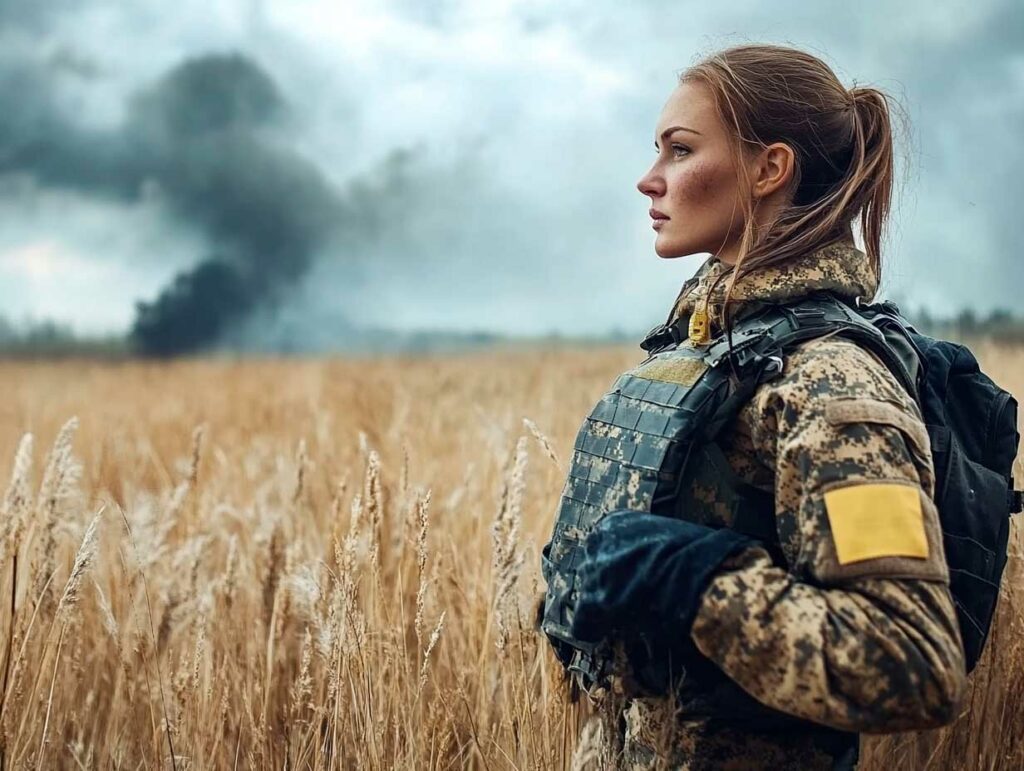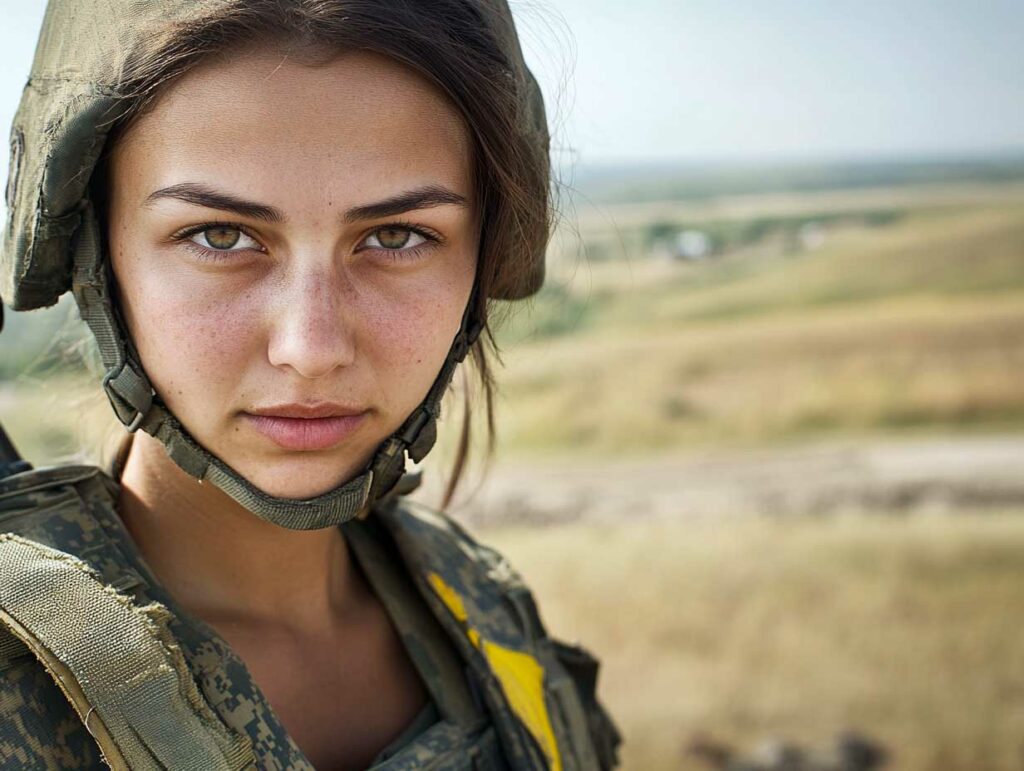
Since 2022, 68,000 women have served in the Ukrainian army, occupying key roles in support, intelligence, drones, and sometimes even as snipers.
Since the Russian invasion in February 2022, the place of women in the Ukrainian army has changed profoundly, both out of strategic necessity and individual desire. Although they were not subject to conscription, tens of thousands of Ukrainian women voluntarily joined the armed forces. In 2024, their numbers reached 68,000, with a significant proportion holding positions in operational units: snipers (6%), drones (23%), medical personnel (22%), intelligence and staff (25%). This mobilization of women is unprecedented in Europe’s recent military history. It reflects both the accelerated militarization of Ukrainian society and the transformation of gender norms in a context of total war.

Rapid feminization in the urgency of conflict
Before 2022, the presence of women in the Ukrainian army was limited to support and healthcare roles. The Russian invasion changed this. Faced with a critical need for qualified personnel, the Ukrainian army opened up many roles to female volunteers without waiting for formal structural reform.
Unlike men, who are subject to compulsory mobilization, women have only been enlisted as volunteers. Despite this, the number of women in the army has exploded, rising from a few thousand in 2021 to 68,000 in 2024, according to official figures. This increase has been facilitated by:
- direct demand for combat units with specific skills (drones, computer graphics, telemetry, languages),
- recruitment via social media, bypassing traditional bureaucratic channels,
- the individual motivation of a growing number of women who refused to remain passive in the face of the Russian attack.
This is therefore a voluntary, skilled, and targeted mobilization, based as much on the digital agility of the women involved as on their ability to adapt to high-intensity modern warfare.
Strategic roles at the heart of operational units
Among the 68,000 women currently serving:
- 6% are snipers, or around 4,000 female snipers,
- 23% work in drone units, or around 15,600 women,
- 22% belong to the military medical services,
- 25% are integrated into intelligence, analysis and staff services, including within the Main Intelligence Directorate (GUR) and the Security Service of Ukraine (SBU).
These figures reveal the strong presence of women in tactical, technical and decision-making roles within the military apparatus. They are present on the ground, often close to the fighting, as:
- tactical drone operators for targeting and surveillance,
- liaison officers within reconnaissance units,
- intelligence analysts in the theater of operations,
- war doctors and front-line first responders.
Their integration is not formal or symbolic. They occupy critical roles in the operational chain, sometimes without prior military training, but with civilian skills that are directly transferable to the battlefield (engineering, IT, emergency medicine, foreign languages, etc.).
Accelerated social and military transformation
The opening of military positions to women has occurred in a context where the line between civilians and combatants is blurring, particularly in hybrid war zones. The war in Ukraine, like other recent conflicts (Iraq, Afghanistan), shows that the rear lines are as exposed as the front lines, reducing the relevance of a strict distinction between combat and support positions.
This operational reality is now recognized in many Western armies. In the United States, for example, 90% of military occupations are now open to women, who represent:
- 18% of the Army and Navy,
- 24% of the US Air Force.
They provide support to special forces (SEALs, Delta Force), in intelligence, logistics, and communications, often in contact with the front lines.
Ukraine is following this trend, with the rapid but pragmatic integration of women, dictated not by ideology but by strategic urgency and the scarcity of human resources.
Comparison with Russia: female mobilization for logistical purposes
Russia, faced with a shortage of male volunteers due to high mortality rates, has also stepped up the recruitment of women, but mainly for non-combat roles.
In Western forces, only 10 to 15% of military personnel are engaged in combat units, with the rest made up of support staff. In Russia, around 50% of personnel are assigned to combat. To maintain this ratio, Moscow is seeking to assign as many women as possible to logistical, medical, and administrative roles, thereby freeing up more men for front-line units.
However, unlike Ukraine, the mobilization of women in Russia remains limited, undervalued, and confined to the margins of the military hierarchy. This is due to cultural, ideological, and organizational factors, but also to a growing fear of widespread recruitment, particularly due to the demobilization of Russian public opinion.

Towards a changing military doctrine on gender
The Ukrainian experience shows that the feminization of modern armies is not an abstract societal project, but a functional response to operational constraints. The conflict in Ukraine has become a military and social laboratory, where women’s skills are recognized for their operational value, and no longer as mere symbolic support.
At the NATO level, this experience could inspire a doctrine of “total mobilization of society,” where selection criteria are dictated by usefulness in the field rather than traditional gender considerations.
Ukraine, by force of circumstance, is redefining the military role of women in 21st-century industrial warfare, and this evolution could permanently change recruitment, training, and command practices in Western armed forces.
War Wings Daily is an independant magazine.